#character of color
Explore tagged Tumblr posts
Text
Evidence that Kabru from Delicious in Dungeon is Indian, a Masterpost
(EDIT: This post is an excerpt/remix of Kabru's section of my larger essay about the real world linguistic and cultural references Dungeon Meshi. You can read the essay on AO3 here. I also have another post about what part of South Asia I think Utaya is based on here.)
Since Kabru’s first appearance in the anime is upon us, I wanted to write something that compiles all the evidence we have that Kabru is meant to be a person of South or Central Asian ethnicity, or at least whatever the equivalent to that is in the Dungeon Meshi world.
Ryoko Kui can and does draw people of many different ethnicities, and the way she draws Kabru matches the way she draws other Asian characters in Dungeon Meshi. He doesn’t look Black, or Hispanic, or any other ethnicity because he isn’t supposed to. He looks like a dark-skinned South or Central Asian person, because that’s what Ryoko Kui probably intends him to be.
So let’s go through the evidence! (There are no spoilers for the plot of Dungeon Meshi below, but there ARE spoilers for Kabru's backstory as explained in the manga, and in extra materials like the Daydream Hour and Adventurer's Guide book.)
KABRU’S NAME
The Dungeon Meshi Adventurer's Bible tells us Kabru’s real name is unknown. There are other characters whose real names are only told to us in the Adventurer's Bible and were never revealed in the manga, but then Kabru, Thistle and Izutsumi’s entries simply say their real names are unknown, and though Kui could tell us their true names, she doesn’t. I assume this means that the characters themselves don’t know what their real names are, and that the names they go by are not their birth names, but this is only a supposition on my part.
KABRU THE MOUNTAIN
Kabru (काब्रु) is the name of a mountain on the border of Nepal and India, and part of the Himalayan range. It’s the 65th tallest mountain in the world and it is very snowy and icy, with frequent avalanches. Because of this, even though it’s not the tallest mountain in the world, climbing it is challenging, and is not often attempted. Those few that have managed to climb it consider it a major achievement.
“This prohibitively fearful icefall… had thwarted numerous expeditions, perhaps even the 'thought' of attempting the mountain… Unstable seracs of the icefall, a complex maze of chasms, and delicate snow bridges spanning seemingly never ending, near bottomless crevasses… Each time the members stepped into the icefall, they stood a good chance of never returning.” (Kabru - Mountain of the Gods, Major A. Abbey, Himalayan Journal 52, 1996, editor Harish Kapadia)
WHAT DOES KABRU’S NAME MEAN?
Kabru is a character that is known for being very good at charming people, but who doesn’t express himself honestly, because he’s trying to manipulate the people and situations around him in order to maintain control at all times. I think nobody really knows who Kabru is deep inside, maybe not even Kabru himself, so a remote, hostile, icy mountain that’s hard to climb seems like an extremely appropriate name.
Some of the oldest English sources I found regarding Kabru suggest that Kabru isn’t the correct local name for the mountain (a common problem in early Himalayan exploration by Europeans) and might just be a descriptor, or that it’s a misspelling.
This makes the name seem even more appropriate, since Kui’s told us Kabru’s true name is unknown. It’s possible that Kabru was a place-name or a descriptor that Milsiril (Kabru’s elven foster mother) was given when she picked up a traumatized 7 year old Kabru, and she just started using it as his name, and that even he doesn’t remember his real name thanks to his severe trauma.
The fact that people in the real world can’t seem to agree on the mountain Kabru’s name, or what it means, reminds me of the running gag of Laios repeatedly getting Kabru’s name wrong in the manga.
"All the people near the Kabru massif call it 'Kaboor'." (The Alpine Journal, 1921-22 Volume 34, Edited by George Yeld and J. P. Farrar) “It is also said that the name applies to a peak close to Kinchinjunga on the southeast, and not to the peak known to Europeans as Kabru… [The real name is] Pahung Ri [Pauhunri].” (Appendix I: Place Names in Darjeeling. The appendix says it was “compiled mainly from an article written by Colonel Waddell and published in the Journal of the Asiatic Society of Bengal (Vol. LX, part I, 1891)”) “Kangchen is a Tibetan name… the Sikkhimese use it as the name for the peak called Kabru by Europeans.” (Charles Bell, Dyhrenfurth's Himalaya (Berlin, 1931)) “...Kyabru or the horn of protection. The name is… Kabur… possibly a corruption of Kangbur or the swelling of snow; it might also mean the white swelling (kar-bur).” (Appendix I: Place Names in Darjeeling.) “Kabru literally means the 'White Avalanche' peak (Ka means 'white' and bru means 'avalanche').” (Kabru - Mountain of the Gods, Major A. Abbey, Himalayan Journal 52, 1996, editor Harish Kapadia)
I’ve seen one other mountaineering article cite the “white avalanche” meaning, and I think it’s plausible since the Appendix says it can mean “white swelling” or “swelling of snow”, which may very well be a literal translation for “white avalanche”.
WHAT ABOUT UTAYA? IS THAT INDIAN TOO?
Utaya means “raised” or “uplifted” in Hindi, but it’s also a real village and a Japanese boy’s name.
Utaya (ウタヤ) is the name of the village that Kabru was raised in before his mother died and he was adopted by the elf Milsiril. Utaya is located in the southeast of the Western Continent. It’s worth noting that Kabru probably wasn’t born in Utaya, since his mother had to flee from her home to keep Kabru alive, so Utaya may be some distance away from his birth place… Not so far that a woman with a newborn baby couldn’t survive the trip, but far enough that her husband’s family gave up on chasing her. So Kabru was probably born in a close-by area.
In the real world, Utaya (Yakut: Утайа) is in an extremely rural and isolated area with a population of less than a hundred people. It’s located in the Sakha Republic, which is in the Northeastern part of Asia in the Russian Federation. The Yakut/Sakha are a Siberian Turkic people.
The Turkic peoples are a collection of diverse ethnic groups of West, Central, East, and North Asia as well as parts of Europe, who speak Turkic languages.
Early and medieval Turkic groups exhibited a wide range of both East Asian and West-Eurasian physical appearances and genetic origins, in part through long-term contact with neighboring peoples such as Iranian, Mongolic, Tocharian, Uralic/Yeniseian peoples, and others. Turkic peoples share, to varying degrees, non-linguistic characteristics like cultural traits, ancestry from a common gene pool, and historical experiences.
JAPANESE MEANINGS FOR UTAYA
Utaya can be a Japanese boy’s name with several different meanings, depending on which kanji it’s spelled with. In most of the spellings: Poetry, sing a poem, singing, compose poetry
In many of the spellings: The place where the sun shines, it's been a long time, distant, big, to shoot with a bow, to swear, affirmation, question.
The Utaya disaster happened a long time ago.
If Utaya is up in the mountains above the clouds it’s a place where the sun shines brightly.
Kabru has sworn to himself that he will prevent another Utaya tragedy from happening.
In only a few of the spellings: to mend, feathers, wings, a word for counting birds and rabbits, sort them out, washing with water to separate the good from the bad, roof, house with a roof, a world covered with a big sky, infinite space, song that praises the Buddha, Eight.
Counting birds and rabbits makes me think of divination and also that the people of Utaya were like little birds and rabbits (small prey animals) to the monsters that devoured them.
Separating the good and the bad could hint to the “judgment” of Utaya and the greed of its people that led to their downfall, also sorting through things to separate good and bad is something that’s done with food and other resources.
The Himalayan region is often referred to as the “roof of the world”, with a big open sky above it.
The infinite could refer to the dimension the demon comes from, or to the sky above the mountains.
Buddhism is a common religion in the Himalayan region, and eight has auspicious connotations in Buddhism.
With all that in mind, Utaya as a name for Kabru’s home village is an interesting choice, and adds another layer to his origins, maybe suggesting not just North Indian/Himalayan, but Central or North Asian cultural influence as well.
It is also possible that the name is just telling us that Utaya is “up” in the mountains, or that it was “uplifted” by the wealth of the dungeon, or even that Kabru was “raised” there… The Japanese name meanings are also extremely fascinating and hint at similar ideas, as well as the tragedy that happened to Utaya.
WHY ELSE DO YOU THINK KABRU AND UTAYA ARE HIMALAYAN?
In the real world, the Himalayan mountain range is an extremely popular tourist destination, and the amount of people who want to visit and attempt to climb the mountains far outpaces the local ability to support it. This makes me think of the dungeon of Utaya and how people overcrowded it in their desire to conquer and exploit it.
Dungeons as an unsustainable way for locals to make a living that leads to the destruction of their homes when the dungeon inevitably collapses is a major plot point in Dungeon Meshi, so I think the parallel is likely intentional. Characters often talk about someone “conquering” the dungeon, and “conquer” is also the terminology commonly used for climbing a mountain. This terminology obviously has a hostile, imperialist subtext in the real world, since it’s most commonly used by outsiders talking about proving their strength by climbing a mountain.
Also, there are local legends in the areas surrounding Mt. Kabru that there is a valley of immortality hidden on its slopes, which reminds me of the way that the dungeons can grant conditional immortality to the people inside of them.
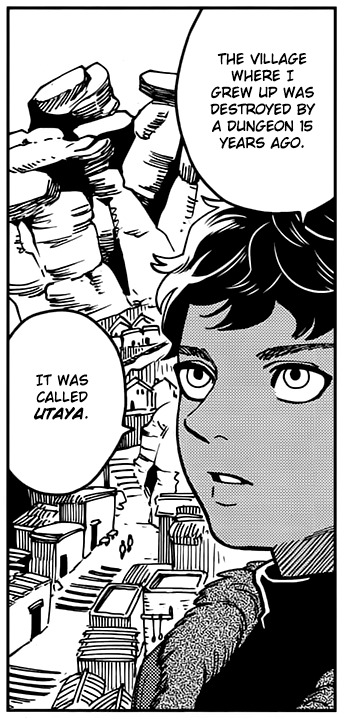
This image of Utaya could be showing us a village built on a mountainside. The house shapes seem a bit more Middle Eastern than Nepali/Indian, but it’s not a detailed drawing and the roof styles are a mix of flat and peaked.
CULTURE
In the Daydream Hour sketchbook, Ryoko Kui included a small comic about characters sharing desserts from their home countries. A young Kabru is shown enthusiastically trying to share an unnamed sweet, and he is interrupted by his elven foster mother, who insists he present a type of elven cake instead. We know that Kabru hates this type of cake, and he seems disappointed to have to eat it and talk about it.
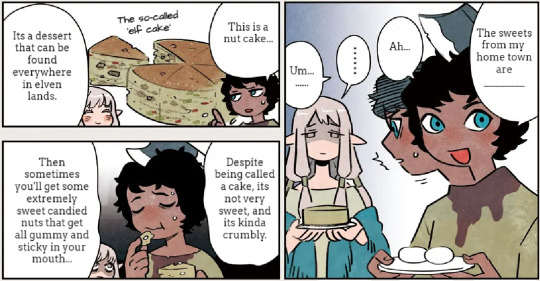
The white balls in Kabru’s dessert are very likely meant to be an Indian sweet called rasgulla (literally "syrup filled ball"). Rasgulla are a dessert popular in the eastern part of South Asia, made from ball-shaped dumplings of chhena dough, cooked in light sugar syrup. While it is near-universally agreed upon that the dessert originated in the eastern Indian subcontinent, the exact origin is disputed. Rasgulla are as culturally important to the Bengal and Odisha regions of India as Parmesan cheese is to the region of Parma in Italy.
Rasgulla are also popular in Nepal, where they are called rasbari.
KABRU’S PHYSICAL APPEARANCE

Kabru is one of several characters in Dungeon Meshi with clearly non-European features: he has brown skin and thick black/dark brown curly hair. He has almond-shaped eyes with long, dark lashes (fans like to joke that he’s wearing eyeliner). All of these are traits common to people from the Indian subcontinent. His blue eyes are not common for someone with his skin/hair color, but blue or green eyes are not unheard of in that region either.

(Indian man with blue eyes)
Blue or light eyes are often a cause for discrimination, like what Kabru experienced as a child. More on this in a moment.
Kabru is 5’7” (170cm) tall, which is short for a Northern European man (180), tall for a Nepali man (162cm), but close to the average height of Indian men (177cm). He has a slender build, which is also common for Asian people in general, and South Asian men in particular.

Compared to the European-looking tall-men in Dungeon Meshi (such as Laios, Falin, Delgal, Marcille’s father), Kabru’s facial features look more like the other Asian characters, such as Toshiro and his party.
CAN DARK-SKINNED PEOPLE HAVE BLUE EYES?
Yes. Light-colored eyes are very uncommon in parts of the world where most people have dark eyes, since dark eyes are a dominant trait in real-world human beings. That means that in order for two parents with dark eyes to have a child with light eyes, both parents need to have a recessive light-eyes gene (or for there to be an illness or genetic mutation), and that’s rare in populations that don’t have a lot of light-eyed people to begin with.
THEN WHY DO SO MANY DARK-SKINNED CHARACTERS HAVE BLUE EYES?
Anime and manga often give characters with dark skin light colored eyes instead of allowing them to have brown or black eyes, which is much more common in real life. It’s a hurtful design trope that makes many readers feel that their natural dark eyes are somehow ugly or inferior to blue eyes.
This trope is used over and over again by authors who want their characters to look “cool” and “exotic”, and for their eyes to be high-contrast to make it easier to show their emotions.
I don’t think this is what Ryoko Kui is doing in Dungeon Meshi.
UNREALISTIC HAIR AND EYE COLOR COMBOS IN ANIME
In a lot of anime/manga, blue eyes (regardless of skin color) don’t actually mean anything in the narrative, in the same way characters having green or pink hair doesn’t mean anything, the colors are non-diegetic, they don’t actually exist in the world, like the music that plays in the background without an on-screen source.
It’s an artistic shorthand to make characters visually stand out, instead of giving them all black hair and eyes like most real-life Japanese people… Which is what most anime/manga characters are meant to be: Japanese people.
Dungeon Meshi has a large cast of characters that are explicitly meant to be non-Japanese. We know this because there’s a group of characters that are Japanese, and they’re drawn differently from everyone else, they wear ethnically Japanese clothing, and have ethnically Japanese names.
Unlike other series, where eye and hair color don’t mean anything, Dungeon Meshi has no unrealistic skin, hair, or eye color combinations.
(Except for the elves, who seem to have different genetics than real world-humans. I’ll get into that another time.)
Ryoko Kui must be aware of the dark skin, blue-eyes design trope, because if she gave Kabru blue eyes just because she thought it looked good, surely she would have made some of the other Asian or dark-skinned characters have light eyes. Out of 9 Asian or dark-skinned tall-man characters, Kabru is the only one with blue eyes.
Kabru having light-colored eyes is central to his story, and Kui talks about it.
KABRU’S STORY AND WHY HIS BLUE EYES MATTER
Kabru’s father and his family tried to kill Kabru when he was born because he had blue eyes. Kabru’s mother ran away, and ended up raising Kabru by herself in Utaya. She didn’t try to return home to her own birth family, but instead struggled to raise a child completely on her own with no money or support, which implies she had no other options, due to the fear people of their region have for people with blue eyes.
This is a real thing that used to happen frequently in areas where most of the population has dark eyes, and it still happens to this day.
In a realistic story, this is logically what would happen to a character with dark skin born with blue eyes in a place like the Utaya region. It’s rare for manga or anime to show dark-skinned blue-eyed characters facing this.
WHAT IS THE “EVIL EYE”?
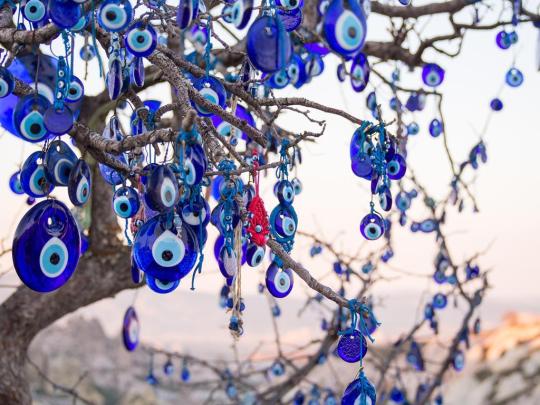
The “evil eye” is a supernatural belief in a curse brought about by a person looking at you. The belief in the evil eye has existed since prehistory, as long as 5,000 years ago. It is estimated that around 40% of the modern world's population believes in the evil eye. This concept is most common across the Mediterranean, the Balkans, the Middle East, and Central and South Asia, areas where light-colored eyes are uncommon.
In areas where light-colored eyes are rare, people with green eyes, and especially blue eyes, are thought to bestow the curse, intentionally or unintentionally. Just one look from a blue-eyed person is often considered enough to inflict a curse.
One of the most famous and widespread talismans against the evil eye is the nazar, a glass amulet featuring concentric circles in dark blue, white, light blue and black. It’s supposed to “bounce” the curse away from the wearer.
HOW DOES THIS APPLY TO KABRU?
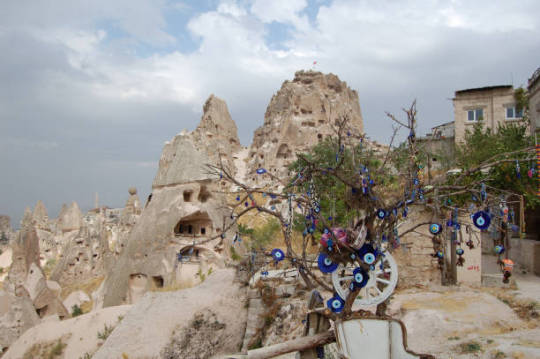
Imagine Kabru growing up in a village surrounded by people wearing and hanging talismans that look like his eyes, because the people around him think blue eyes are evil. They call his mother a witch for birthing him, and a whore because she doesn’t have a husband. Imagine parents forbidding their children from playing with or even talking to Kabru. People crossing the street to get away from him, or chasing him away by throwing rocks.
I think the reason young Kabru was able to learn how to speak some kobold is likely because he was so heavily ostracized by the other tall-men around him, the only children he could occasionally interact with in Utaya were kobolds, who might not share the same cultural superstitions that the tall-man do.
This childhood trauma, combined with Kabru’s experience of the dungeon collapse in Utaya, and being raised by an elf that treated him more like a pet than a human being, set Kabru up as a character who has never had a home where he belongs. He has been an outsider from the instant he was born, and every place he has lived treats him as an “other.”
To his father’s family, he was a curse. To his mother, although she loved him, he was a burden. To the people of Utaya, he was a monster. To the elves, he’s a tall-man baby (no matter how old he gets) with funny looking eyes, to the people on Merini Island, he’s a foreigner from the West with elven ways and education.
CONCLUSION
I wanted to write this because I know some people will see Kabru in the anime for the first time today and think "Oh, another dark skinned blue eyed character! This is a bad character design that is evidence that the author is racist at worst or ignorant at best.” And I don’t think that’s a fair assessment of Ryoko Kui’s work in Dungeon Meshi.
This isn’t to say that Ryoko Kui has never done anything wrong, or that her work couldn’t be more inclusive, or that there’s no way in which she could improve.
But there are pages and pages of artwork she’s done that shows she cares about these issues, and I think it’s worth celebrating when someone makes that kind of effort with their artwork.
ANYWAY…
If you’ve read this far, you’re very strong hahaha. I hope you enjoyed this essay. I’ll be publishing more soon when I finish my Dungeon Meshi research on the names and cultures of all the characters. Wish me luck!
#dungeon meshi#delicious in dungeon#dunmeshi#kabru#my stuff#analysis#character of color#theories#Dungeon Meshi Research
2K notes
·
View notes
Text

Support me on Patreon or send a tip on Kofi!
Prints avail on Redbubble!
(ID in alt and under cut)
ID: Full body art nouveau style portrait of a fat black woman in a sheer white bandeau dress sitting on the branch of a massive tree. A smaller leaf heavy branch extends above her, laden with ripe bundles of oranges. Smiling serenely, the woman leans back on one hand and reaches up with the other to cradle an orange in her palm. Her long, thick, coiled black hair tumbles out behind her and drapes itself across the branch she is seated on, backlit by glowing sunlight that shines through the innermost branches above. Behind the image is the blue of a summer sky, surrounded by a circular rainbow border wrapped in green vines. /end ID
#art#art nouveau#pastoral#fat positivity#art print#wlw#sapphic#black woman appreciation#character of color#fat character#fat woman appreciation#my art#image described
370 notes
·
View notes
Text
Happy Trans Day of Visibility!
Here are some picture books to help celebrate trans kids:





When Aidan Became a Brother by Kyle Lukoff – When Aidan was born, everyone thought he was a girl. Eventually, Aidan realized he was actually a boy, and so he and his parents corrected the parts of his life that didn’t fit anymore. Now, Aidan is about to become a big brother, and he wants to make everything right for the new baby. But what exactly does that entail?
Not Quite Narwhal by Jessie Sima – Kelp was always a little bit different from the other narwhals. One day, when they get separated from their friends, Kelp realizes they're not really a narwhal at all, but rather a unicorn. What will his old friends think of this discovery? Can probably also serve as an allegory for disabilities.
Red: A Crayon’s Story by Michael Hall – Red is a crayon who can only colour blue, no matter how hard they try. And they genuinely do try! Until one day, Red is asked to help colour an ocean, and they realize there was nothing wrong with them to begin with, they just had the wrong label all along. Note: Can also work well as an allegory for invisible disabilities.
My Shadow is Purple by Scott Stuart – A rhyming story about a genderfluid kid finding their voice and their own place in the world, inspiring other gender-nonconforming kids in their school to feel safe to come out and be themselves.
A Costume for Charly by C.K. Malone – For Charly, who’s nonbinary, finding a Halloween costume is always tricky. It needs to represent both their feminine and masculine side, which isn’t easy to do. Will they finally find the perfect costume this year?
#transgender#trans day of visibility#lgbt#lgbt+#lgbt pride#lgbt+ characters#queer pride#queer characters#kidlit#picture books#character of color#poc characters#trans positivity#librarylife#libraryland#libraries#school libraries#school librarian#public libraries#book recommendations#book reccs
44 notes
·
View notes
Text


DEJA! Chapter 1, pages 3 and 4
Table of Contents
prev - next
#DEJA!#deja!#magical girl#webcomic#indie comic#black character#character of color#poc character#oc#my ocs#artists of tumblr
23 notes
·
View notes
Text






Finished this monster of a ref today and because of this one I'm reworking reference sheet prices so you can pick and choose/build your own for what you need, so if you want a headshot you can add it if ya don't ya don't need one.
Iseul Phan belongs to @faywildimaginal
#art tag#oc tag#oc#oc art#nonhuman art#nonhuman#shapeshifter#poc#character of color#mixed character#artists on tumblr#digital art#character sheet#character reference#oc: iseul#also with the in progress prices i have a ref like this would be $700 to give an idea#and thats mostly because for the different human forms that were more masc or fem i actually redraw#i didnt just copy paste and edit them slightly#twas only a slight pain in the ass.
47 notes
·
View notes
Text











A Beginner's Guide to: Justice, Chief of All Virtue
Shouting out @vacantgodling for his "a guide to: hyacinthus shrapnel" post for inspiring this! Shouting out @auroblaze again for providing all her lovely art! Slide descriptions are in the alt text! Let me know if I did a good job!
Pride & Justice Taglist (Check out my Google form to get added): @elegant-paper-collection @auroblaze @zeenimf @vacantgodling @foxys-fantasy-tales @stesierra @noblebs @thelaughingstag
#original character#character creation#writers on tumblr#writeblr#writeblr community#bisexual character#character of color#annika talks#oc meme#P&J#Pride & Justice#Justice
40 notes
·
View notes
Text

A Piper to warm the soul 🫶🧡
Kofi commissions open!
#wary taru#traditional art#my art#storm hawks#storm hawks piper#storm hawks fanart#piper but she's in her early twenties#my girl#*gently holds*#character of color#poc characters#fan art#art commisions#open commissions#commission#artist on kofi#kofi commission#artists on tumblr
22 notes
·
View notes
Photo



Chapters: 1/1 Fandom: Mortal Kombat - All Media Types, Mortal Kombat [Video Games 1992-2020], Mortal Kombat [Video Games 2023-] Rating: General Audiences Warnings: No Archive Warnings Apply Relationships: Tanya & Tanya [Mortal Kombat] Characters: Tanya [Mortal Kombat] Additional Tags: Commissioned Art, Pixel Art, Pixels, Art, Digital Artwork, Artwork – Freeform, Artwork - Freeform, Female Characters, Yellow [Color], Embedded Images, Embedded Fanart, POV First Person, Word count: 0 - 100, Full Color, Black Character(s), Female Character of Color, Illustrations, not a fic, Betaed - No, Gen Work, Game 4: Mortal Kombat 4, Game 12: Mortal Kombat (2023), Game 10: Mortal Kombat X, Black Hair, Black Eyes, Autistic Author, Cross-Posted from AO3 Summary:
I had commissioned several Tanya pixel sprites from @joy_art0. Tanya in MK4, MKX & MK1 2023.
#commissioned art#pixel art#pixels#pixelart#tanya#mk tanya#tanya mk#mortal kombat#mortal kombat 1#mortal kombat 1 2023#mortal kombat x#mortal kombat 4#mk1 tanya#tanya mk1#mk1 2023#mk 1 2023#mk1#mk 1#mk4#mkx#character of color#video game character#pixel sprite#pixel character#pixel graphics#cute pixels#squidge.org#squidgeworld#squidgeworld.org#squidgeworld archive
10 notes
·
View notes
Photo
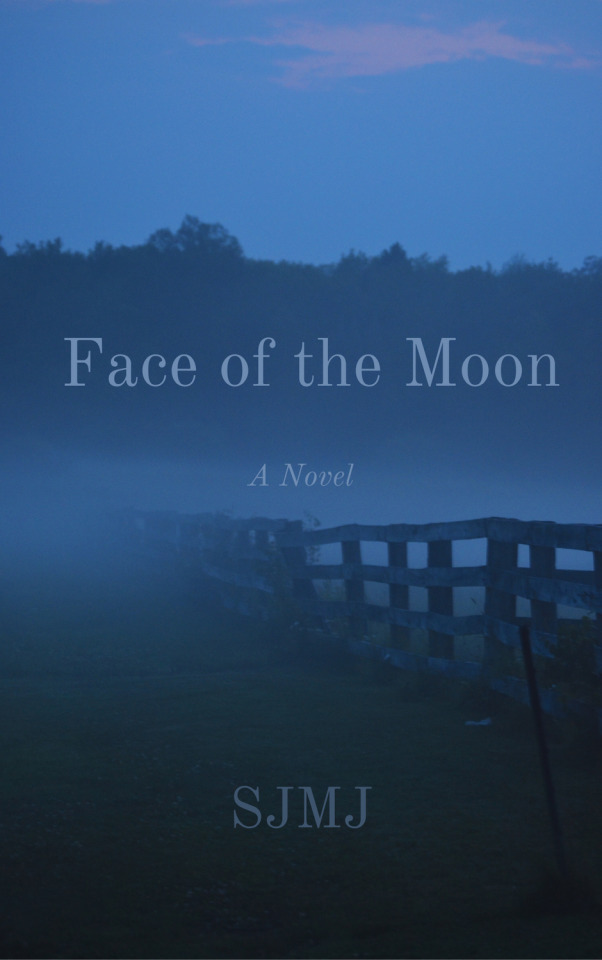
Excerpt from Chapter 1: Hands
I love his hands. The scars on his knuckles tell stories that only I know. The callouses on his palms have shown me over and over what true tenderness is.
The fog is so thick it’s swallowing the headlights whole. The night around us dark and eerily quiet for the sound of the tires on broken blacktop, leaves occasionally lifting with a slight breeze outside the open windows. The purr of the engine barely a whisper as the ’67 Camaro moves like an apparition with us inside it.
Jacy’s hands are on the wheel, illuminated by the glow of the dashboard lights. I know those hands, I’ve known them on every surface of my body. I know what every touch means and where every scar came from.
He’s unmoving aside from the occasional small breaths. Deliberate, careful breaths like he’s afraid to break something with the simple expansion and contraction of his lungs. Maybe it’s already broken.
“Jacy,” I whisper to get his attention. To stomp out the silence that’s enveloped us. My voice ripples across my vocal cords, I feel it move in my throat and flit across my tongue, pass my lips where it dies in the air outside of me. He doesn’t hear it.
My cheek is pressed against the headrest, it’s damp. Have I been crying? Is that why my voice is rough and inaudible? All I want is to ask him why his brows are dipped in concern, why his jaw is clamped down tight, why his knuckles keep going white on the wheel. I want to ask him why he’s not looking at me. Where we’re going in this fog. I want to know why he looks so terrified.
Now available: https://www.barnesandnoble.com/w/face-of-the-moon-sjmj-johnson/1144251630?ean=2940186112730
#face of the moon#face of the moon novel#face of the moon first chapter#novel planning#novel writing#self publishing process#chapter one excerpt#queer characters#nonbinary character#bisexual character#character of color
23 notes
·
View notes
Text
Why you should watch Red, White, & Royal Blue on Amazon Prime Video

It's a queer romance story
Bisexual and gay representation!
Queer person of colour representation!
There's a woman of colour in traditionally male job
Characters of colour who are just characters who happen to be of colour rather than it being a major part of their character
It's the first queer prince representation I've ever seen in adult pop culture (I've seen one example in kid lit, in the picture book Prince & Knight)
Both the leads are hot eye candy
The storyline's really good
The cinematography is really good
The soundtrack music is bangin'
The story deals with very different experiences regarding what being queer is like
The president of the US in the story is a woman (Una Thurman!)
Happy ending!
It's also a book!
Note: If you're a kiddo you may want to wait until you're a bit older to watch this if your parents aren't okay with you watching stuff with swearing or a sex scene.
#red white and royal blue#queer representation#queer romance#movie recommendation#romance movies#character of color#lgbt+#queer poc#queer positivity#prime video#amazon prime#amazon pride video#romance novels#book to film#book to movie
24 notes
·
View notes
Text
My OC, Alixander!
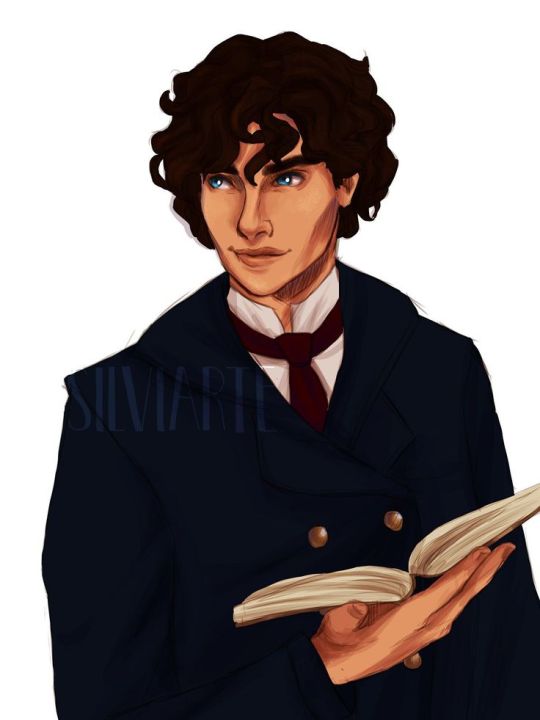


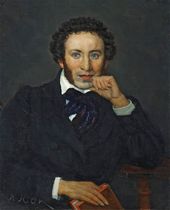
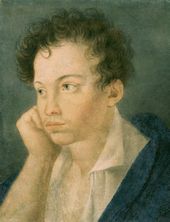

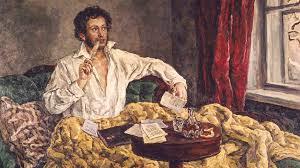

Mixed race poet, part of Diaghilev's World of Art circle.
Inspired by my fried, Pushkin and Lensky
Dates Felix Yusupov, Yusupov thinks Alixander is a reincarnation of Pushkin.
Hellenic pagan, working with Dionysus and Apollo, hedonist.
Bi and paraphile.
Period tailor, dressed in Regency fashion
Tendency for depersonalisation/derealization, fights it with playfulness and silliness.
The two images with blue eyes really remind me of this fic. It's one of my faves and definitely inspired me
@myfateislosingitspatience
#my oc character#alixander#alexander pushkin#lensky#eugene onegin#original character#paraphile characters#bisexual characters#character of color#pagan character#hellenic pagan#historical fiction#felix yusupov
6 notes
·
View notes
Text
Ada Twist, Scientist By Andrea Beaty

Like her classmates, builder Iggy and inventor Rosie, scientist Ada, a character of colour, has a boundless imagination and has always been hopelessly curious. Why are there pointy things stuck to a rose? Why are there hairs growing inside your nose? When her house fills with a horrific, toe-curling smell, Ada knows it’s up to her to find the source. What would you do with a problem like this? Not afraid of failure, Ada embarks on a fact-finding mission and conducts scientific experiments, all in the name of discovery. But, this time, her experiments lead to even more stink and get her into trouble! Inspired by real-life makers such as Ada Lovelace and Marie Curie, Ada Twist, Scientist champions girl power and women scientists, and brings welcome diversity to picture books about girls in science. Touching on themes of never giving up and problem-solving, Ada comes to learn that her questions might not always lead to answers, but rather to more questions. She may never find the source of the stink, but with a supportive family and the space to figure it out, she’ll be able to feed her curiosity in the ways a young scientist should.
5 notes
·
View notes
Text
Chronicles of War
Kanai Makoa Latu/Attahua Kamalani Latu was sleeping in bed with his/her/their/xer native partners of color as a queer trans and polyam native of color. He/she/they were trans as someone bi-gender or gender-fluid and mahu/fakaleiti native third gender. He/she/they were queer as someone pansexual or omnisexual. He/she/they were also polyamorous. He/she/they were a native of color as an Asian Pasifika and Afro Latine Native. He/she/they were a superhuman as an alien hybrid and a metahuman as a demigod. A shapeshifter, changeling, and metamorph as an alien hybrid. A elemental demigod with power over most elemental powers. He/she/they were in bed with their native of color partners Loretta Dawn Isip (Anishinaabe Ojibwe Asian Native), Tyanita Castillo (Tsalagi), Dyani Maka (Lakota), and Inayat Aloomse Barnett (Cree and Cheyenne Indigenous). He/she/they were disabled as someone autistic, neurodivergent (with add, adhd ocd, and hyperlexia), disabled with personality disorders (of bpd or borderline personality disorder, did or dissociative identity disorder, & schizophrenia), disabled with mental illnesses (of anxiety, panic attacks, & ptsd or post traumatic stress disorder), & with prosthetic limbs (a cybernetic eye, a cybernetic arm, & bionic leg. As he/she/they got up the put on jeans, a hoodie, socks, & a leather jacket, over their underwear of a t shirt and boxer briefs. Their clothes had magic and tech to shapeshift with them no matter their sex, gender, & gender identities. His her their Polynesian, Micronesian, & or Melanesian Indigenous Pasifika partners Hokulani Kaimana Keali’i, Dior Linh Heimana Tran, Vaulina Jiya Tagi, & Runica Hana Keju helped them put on their cybernetic arm and bionic leg that they take off when resting. Their prosthetics were maintained by disabled Afro Asian South Asian Desi Indian and Afro European British Amelia Himmat Mishra who had a bionic leg and cybernetic arm. They later made breakfast for their adoptive children of color Maria Morales, Nathaniel Nguyen, Farah Ali, and adoptive indigenous Cree Indigenous children Wapun Barnett, Kitchi Barnett, & Ahanu Barnett. Inayat Aloomse Barnett a Cree and Cheyenne Indigenous woman because of her disability couldn’t have children so after a conversation she and her partner Kanai/Attahua decided to adopt children of color and indigenous children. Before he/she/they left the door they put on their size 12 men’s black and red high stop sneakers with white laces. They in their hover car a futuristic version of a scion frs and a Toyota gt 86 took their adoptive children to junior high and high school. Their older biological native of color children (that they had with their indigenous spouses and partners of color and indigenous exes of color) took themselves and their younger siblings to high school and college by their own hover cars and hover motorcycles.
#indigenous#indigenous artist#native artist#native art#indigenous art#ndn tag#ndn artist#native writer#ndn writer#native representation#trans creator#trans writers#trans representation#disabled writer#disabled artist#disabled representation#bipoc characters#disabled character#character of color
4 notes
·
View notes
Text
Adventures in Librarian-ing
Today one of the Grade 1s came up to me after storytime looking like she was about to explode from excitement.
"Miss Flecha, guess what! This Friday I get to celebrate Eid!"
"Ah, then I have the perfect book for you! It's brand new too, I just finished putting the stickers on it today!"
And I pulled out a copy of The Most Exciting Eid by Zeba Talkhani.
She was SO excited about the book, y'all. Even if she technically couldn't take out a book (if she had forgotten her book) I'd still have let her take it. She kept flipping through it with a look that was a mix of awe with the :D face.

#eid mubarak#kidlit#children's books#children's literature#islam#picture books#school librarian#school libraries#librarians#libraries#library#librarianship#children's librarians#adventures in librarian ing#representation matters#character of color#muslim character#muslim culture
75 notes
·
View notes
Text
#visual novel#indie games#WIP#WIPs#game writer#game writing#visual novel dev#indie game dev#oops too much magic#quillful devs#tw loud#cw loud#my tiktoks#original characters#original character#ocs#oc#character of color#otmm kiho#video games#my ocs
2 notes
·
View notes
Text

✦ Sanctuary ✦
#own art#own characters#CanisAlbus#art#artists on tumblr#Vasco#Machete#anthro#sighthound#scenthound#dogs#canine#animals#been staring at this for so long I feel like my eyes stopped perceiving color altogether#some anon once said that light passes though Machete's ears like stained glass or something along those lines#and I've been thinking about it ever since#trying to convey that vibe
10K notes
·
View notes